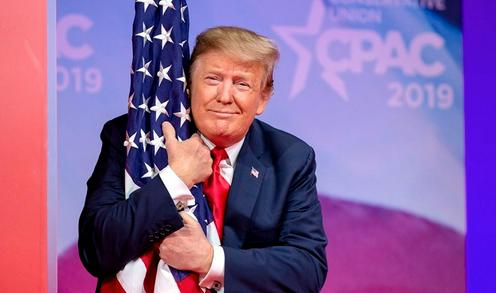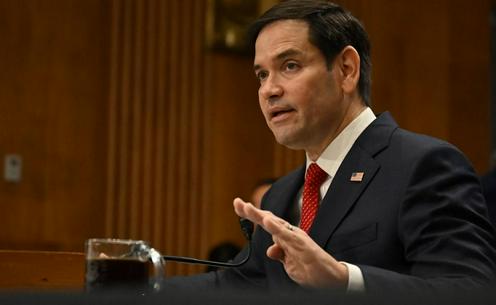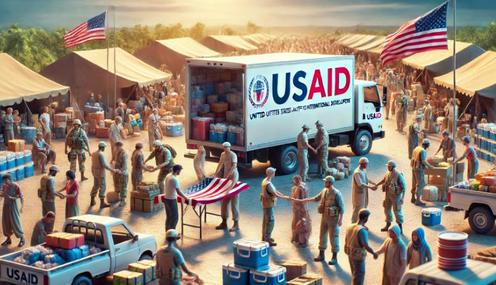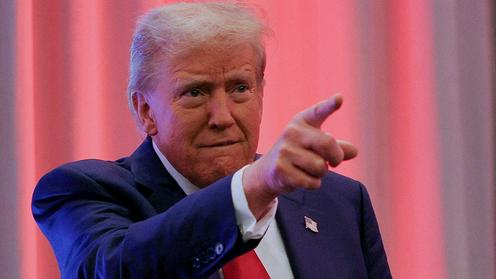The 47th president of the United States, Donald Trump, seemed so eager for power that he began issuing executive orders in bulk immediately after his inauguration on January 20. Many of his decisions impact not only domestic affairs but also the interests of other countries. For instance, news about the deportation of illegal migrants—who are now being sent out of the U.S. on military planes—quickly gained traction. Trump then froze financial aid to foreign states, confirming the signing of an executive order that will remain in effect for at least 90 days. What risks does this suspension pose for the Central Asian republics, and how will the power shift in Washington affect the region overall? «Fergana» explores these questions.
Switch It Off, Rubio
On his very first day in office, Trump signed an executive order suspending foreign aid. The president explained that the «aid industry» does not align with national interests and, in many cases, contradicts American values.
The newly appointed U.S. Secretary of State, Marco Rubio, echoed his boss’s stance that any financial assistance should reflect the policies of the White House. According to him, every dollar spent and every program implemented will now be evaluated based on a single question: “Does this make America safer, stronger, and more prosperous?”
This, however, seems more like grandiose rhetoric. If we analyze humanitarian projects, it’s unlikely that cutting off medical supplies to Uzbek hospitals or withholding warm blankets from Afghan flood victims will make the U.S. any stronger or safer. Nonetheless, it is the Secretary of State who has been tasked by President Trump with conducting a comprehensive review of budget expenditures. The suspension of foreign aid is set to last for 90 days, though Rubio may fail to meet the deadline and request an extension. After all, according to the UN, the U.S. accounted for 42% of global humanitarian aid in 2024—a colossal sum in both volume and investment.
Yet, as is often the case, every rule comes with exceptions. A few days after Trump confirmed the freeze on foreign assistance, the State Department outlined specific areas and projects that would be exempt. In particular, programs aimed at saving lives will continue. This means Washington will not cut off funding for vital medicines, medical services, food supplies, and other essential aid provided to partner governments. Additionally, military aid to Israel and Egypt remains unaffected.
On January 28, the U.S. District Court for the District of Columbia temporarily blocked President Trump’s executive order. However, the ruling only remained in effect until February 3 and applied solely to projects implemented by nonprofit organizations (NGOs) that had sued the government and had already received federal funding. Still, this judicial intervention underscored the strength of American democracy—after all, a court overturned a sitting president’s decision. Such a scenario would be nearly unimaginable in Central Asia.
Despite this temporary relief, NGOs remain deeply concerned. Many of them rely entirely on donor funding and now face the possibility of shutting down. They argue that the funding freeze could have devastating consequences: without social programs, elderly individuals who do not receive pensions could be left without food, and children from low-income families might lose access to education. The judge who issued the ruling justified the decision by stating that she needed time to assess the executive order’s potential harm to the plaintiff organizations.
Yet the impact of halting foreign aid is already visible within the U.S. itself. Some organizations, including those working on international projects funded by the federal government, have begun laying off employees or placing them on extended unpaid leave. As a result, America’s ranks of unemployed workers could see a significant increase.
R.I.P, USAID?
The United States is the world’s largest donor. In the 2023 fiscal year, the country allocated $72 billion for foreign aid, with 90% of that funding distributed through the State Department and the United States Agency for International Development (USAID). Established in 1961 under President John F. Kennedy, USAID holds the status of an independent agency—at least in name. In reality, it remains entirely under government control, with its administrator appointed directly by the president.
According to American media reports, Trump’s executive order has already sent shockwaves through USAID. First, more than 50 senior officials were placed on indefinite leave for allegedly attempting to bypass the new administration’s decision. Second, the agency has begun terminating contracts with numerous contractors, suppliers, and partners worldwide. Even a three-month suspension is expected to lead to the shutdown of certain projects.
Few had likely anticipated the collapse of USAID would come so swiftly. On February 3, Elon Musk, the world's richest man and head of the Department of Government Efficiency in Trump’s administration, publicly supported the billionaire’s view on closing USAID. Musk, known for his sharp tongue, took to his own social media platform X, labeling the agency a «nest of worms» and even a criminal organization that needed to be shut down. According to Musk, the agency was politically biased, pushing «radically left-wing agendas» globally, including anti-American views.
That evening, USAID’s headquarters in Washington shut down, and its employees received notifications that they no longer needed to report to work. Agency leaders, whom the new president had dubbed “a handful of radical lunatics,” were dismissed.
Within 24 hours, it was announced that Secretary of State Mark Rubio would temporarily take over as acting director of USAID. He followed suit with his colleagues, confirming that the agency’s work was not aligned with U.S. interests. While USAID would not be fully dismantled, Rubio revealed it would undergo a significant reorganization. The review of foreign aid had already begun. On February 8, the agency's global staff was informed that they would be placed on administrative leave.
This situation, analysts argue, could lead to severe problems in certain cases. For instance, the closure of the PEPFAR (President’s Emergency Plan for AIDS Relief) program, which supplies vital HIV/AIDS medications to Africa, could result in over 600,000 deaths in South Africa alone over the next decade. The U.S. covers 20% of the funding for this program in the country, but there are other nations where the U.S. provides 100% of the funding. The impact of this halt could lead to an overwhelming crisis in these countries.
How much is it worth in dollars
Central Asia, of course, doesn’t «bite off» such large pieces of the American «pie,» and the scale of the disaster won’t be as significant, but the region also risks losing tens of millions of dollars it receives annually from across the ocean.
Looking at the USAID activity reports, let's check how much America allocated to Central Asian countries last year:
✅ Tajikistan received $58.5 million;
✅ Kyrgyzstan — $45.8 million;
✅ Uzbekistan — $39.5 million;
✅ Kazakhstan — about $15.3 million;
✅ Turkmenistan — $2.8 million.
In the regional ranking, and according to the categorization of the American agency, 13 countries from South and Central Asia are grouped together, with the former Soviet republics placed consecutively from seventh to eleventh.
Analyzing the data, it’s clear that compared to the 2023 fiscal year, allocations to all countries have decreased. Kazakhstan, in particular, saw its aid cut by more than half. Tajikistan, the leader of our mini-list, had its funding reduced by $30 million.
If we look at the areas supported by USAID in Central Asia, there are common points for all five countries. For example, «healthcare» — large sums are invested in projects in this sector in almost all countries, except for Turkmenistan. The U.S. is actively involved in programs under the category of «government and civil society,» supporting «agriculture,» «education,» and «the fight against HIV/AIDS."
In a word, in terms of financial contributions from the U.S., the post-Soviet republics of Central Asia are outsiders even at the regional level. For comparison, last year, Afghanistan, the leader of our geographical group, received $746.6 million from the U.S. budget. The majority of these funds — over 70% — were spent on addressing security issues.
No Shocks Expected
Central Asia expert Temur Umarov believes that there will not be significant changes in the structure of relations between the region’s states and the U.S.
«U.S. foreign policy has noticeably transformed since the end of the military campaign in Afghanistan. After that, the incentives for Washington to return to Central Asia to the extent it was present here in the 2000s and 2010s disappeared,» reflects the source from Fergana. «Now, connections are built through the State Department, various organizations, or specific senators interested in cooperating with the region, but not at the White House level. After all, Trump and his team are focused on other issues: relations with China, Ukraine, the situation around Israel and Palestine, Yemen, Canada–Mexico, sea routes, and so on."
The analyst claims that, on a global scale, the financial flow to the Central Asian republics via USAID was never very large. Therefore, the agency's shutdown will not have a global impact on the region's economy.
«In some areas, like agriculture, education, and the fight against hunger, where USAID was involved in many projects, there will certainly be a downturn. But the situation where Kyrgyzstan's or Tajikistan's GDP was heavily dependent on foreign aid is a thing of the past. However, there will still be 'victims': I fear some NGOs that received funding from the U.S. will have to shut down,» Umarov explained.
He suggested that the decision to freeze foreign aid would most affect Tajikistan and Kyrgyzstan, and in terms of NGOs, Kazakhstan, where such organizations are more active.
«As for Uzbekistan, since 2018, the country has received more funding from the U.S., and a USAID office was opened, but again, the joint projects implemented here are not critical to the republic's economy,» the expert concluded.
Continuing his thought, Umarov noted that the trend of reducing financial flows from the U.S. to Central Asia began long before Trump's second term. By 2025, there had already been a diversification of «donors» — European organizations and Chinese projects had increased their presence in the region. Russia is also actively involved, but with a narrow focus on Russian-language education and cultural programs.
«If we talk about investments, Central Asia relies more on international institutions, such as the World Bank, the China Export-Import Bank, and the Asian Development Bank. Though I admit that certain problems might arise in Kazakhstan, where large American investors operate. In the other countries, there won’t be any distortions in the economy. Especially since partnerships with the U.S. had been declining in recent years,» the expert added.
In the opinion of the Fergana interlocutor, the «C5+1» format (the five countries of the region plus the U.S.) will also not change.
«Because this format doesn’t actually imply any additional responsibility or force the White House into anything specific. I think meetings within this partnership will continue. It’s unlikely to happen at the highest level, as it did once under Biden, but through the State Department for sure. However, we might even see something more interesting, such as the repeal of the Jackson-Vanik amendment (trade restrictions on countries violating human rights — Fergana note), which Marco Rubio had spoken about even before becoming Secretary of State,» Umarov concluded.
-
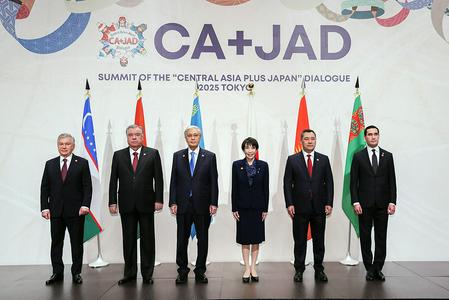 23 December23.12PhotoTokyo DriveJapan to invest about $20 billion in projects across Central Asia over five years
23 December23.12PhotoTokyo DriveJapan to invest about $20 billion in projects across Central Asia over five years -
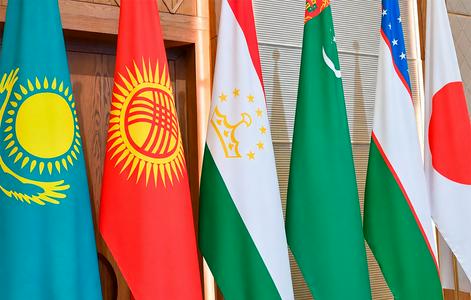 17 December17.12Sake for SixCentral Asia’s Rapprochement with Japan Comes with Hidden Pitfalls
17 December17.12Sake for SixCentral Asia’s Rapprochement with Japan Comes with Hidden Pitfalls -
 17 December17.12Gulshan Is the BestYoung Uzbek Karateka Becomes World Champion
17 December17.12Gulshan Is the BestYoung Uzbek Karateka Becomes World Champion -
 24 November24.11Here’s a New TurnRussian Scientists Revive the Plan to Irrigate Central Asia Using Siberian Rivers
24 November24.11Here’s a New TurnRussian Scientists Revive the Plan to Irrigate Central Asia Using Siberian Rivers -
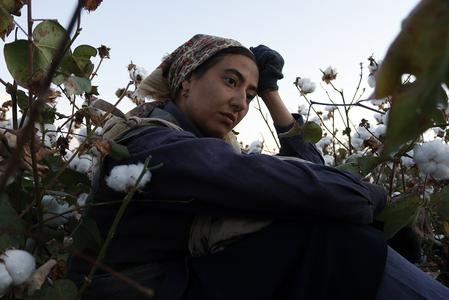 11 November11.11To Live Despite All HardshipUzbek filmmaker Rashid Malikov on his new film, a medieval threat, and the wages of filmmakers
11 November11.11To Live Despite All HardshipUzbek filmmaker Rashid Malikov on his new film, a medieval threat, and the wages of filmmakers -
 01 November01.11Catching Up with UzbekistanAlisher Aminov on the Problems of Kazakh Football and Plans to Fix Them
01 November01.11Catching Up with UzbekistanAlisher Aminov on the Problems of Kazakh Football and Plans to Fix Them
